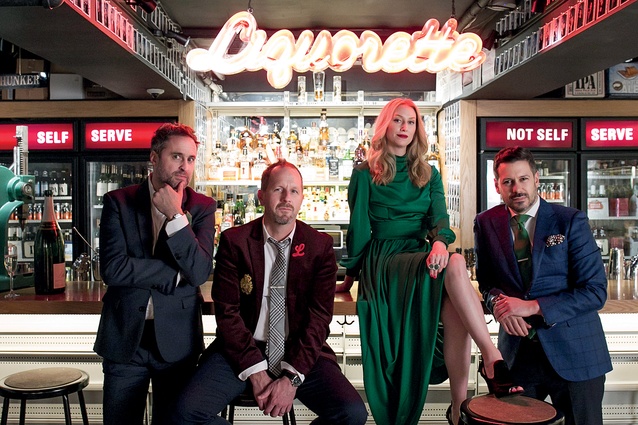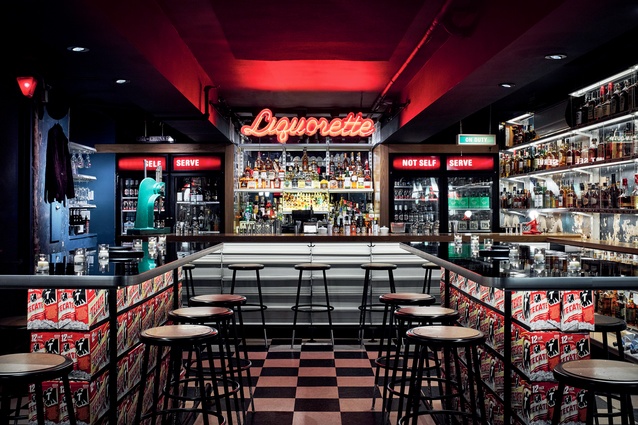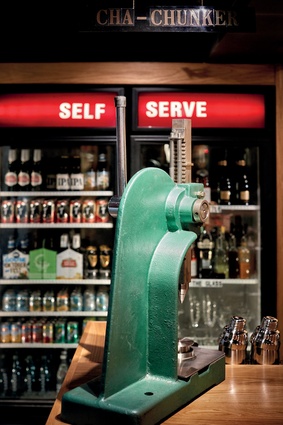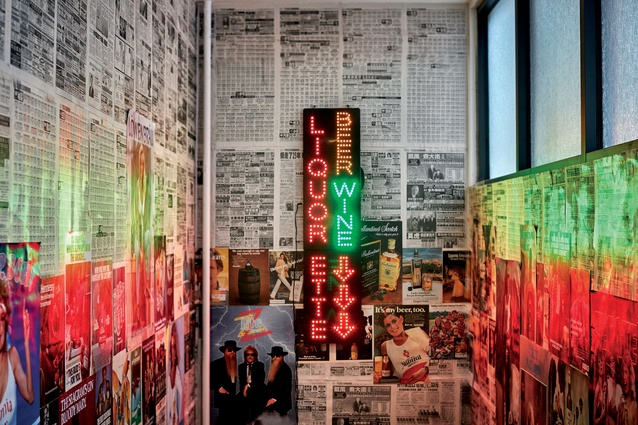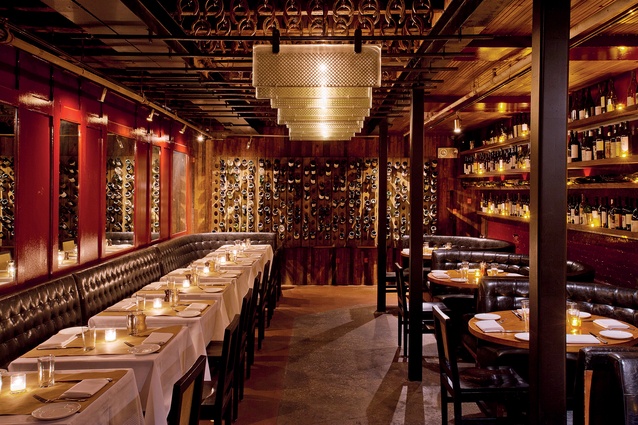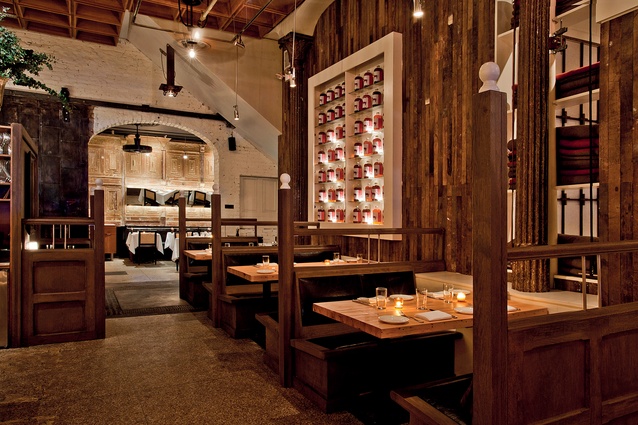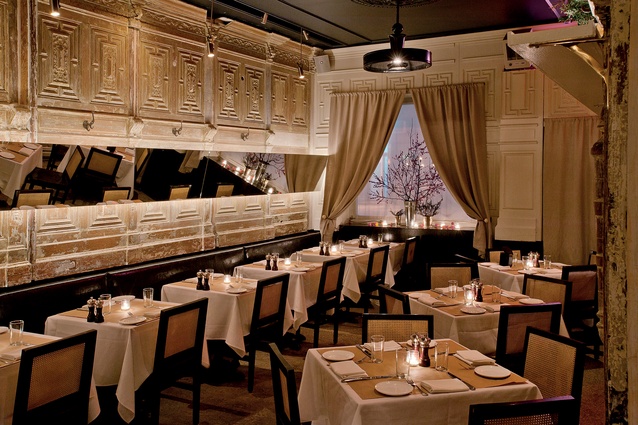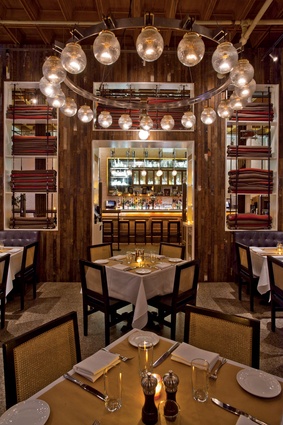Holistic hospitality: AvroKO
United States hospitality design firm AvroKO works in over 25 cities across the globe and they are crafting a food hall and their own restaurant (Saxon & Parole) in Auckland’s Commercial Bay. Interior caught up with the partners of the highly acclaimed group to get a glimpse at the secret behind their success.
How would you describe your design ethos?
Kristina O’Neal (KO): We believe in making truly connected experiences where meaning and purpose is mined in every aspect of a hospitality project. It’s a very holistic vision of hospitality, and to achieve it, we’ve created several divisions within the company that can really surround a project, from strategy and branding, interiors and architecture, furniture and lighting design and production to operations and menu development.
Your firm is very collaborative with little hierarchy. Why and what does your business gain from such a management structure?
William Harris (WH): While we do encourage unbridled collaboration, we do still have hierarchy within the studios as this helps young designers grow and more seasoned staff to be mentors and drive projects effectively. Amongst the partners we have no hierarchy, however. We collaborate on most things but have certain interests and proclivities that each partner will own more fully. These interests are constantly in flux, however, and it’s not uncommon to mix things up often.

With studios in 14 countries and over 100 staff, how do you keep the essence of that ethos and level of detail across every project?
Adam Farmerie (AF): We are fortunate in that we have four partners who can cover a lot of ground globally and ensure that projects retain the ethos and attention to detail that we’re known for. We also have amazing directors and staff, many of whom have spent significant time in multiple studios. Encouraging our teams to communicate and participate in tours of duty in our various studios helps to maintain culture, quality and a global understanding of hospitality nuance and changing ideals.
If you had to impart one piece of advice to designers working across continents, what would it be?
Greg Bradshaw (GB): Pack melatonin! Besides that, we’d say be sure to really listen and observe. It’s sometimes easy to think you know what’s best for a new or faraway market, but leave your assumptions aside and be sure to look with fresh eyes to see what can truly be innovative and helpful.
Every AvroKO project seems to tie back to a story. Does storytelling shape your designs?

KO: We create concept stories that become a roadmap; a filter through which every aspect of the project will be guided, from the interiors to graphics to uniforms to food and beverage programme and service style. We continue to refine and build upon that process, which we now call ‘hospitable thinking’. We apply this to not only the hospitality world but to all that hospitality is now influencing, including retail, office design and beyond.
What is the most significant design element that affects a dining experience?
WH: Lighting can single-handedly change mood or vibe and create certain impressions that can make or break a dining experience. And when everything feels right, the food and drinks just taste that much better. We also use lighting to draw people through a space; to create a bit of mystery and intrigue along the journey. And lastly, we often take the opportunity to craft highly memorable and sculptural moments out of our lighting, which can create visual drama and add an aspect of artfulness that can set a project apart.
When you are creating your own restaurants, do you have a certain demographic at the back of your mind and you try to create a stage for them?
GB: Yes, it’s very important to have a strong idea of who your demographic is while creating a project. It’s vital to understand your market to help tailor an expression that will provide value, excitement and a compelling reason for a patron to decide to spend a chunk of their very valuable time at your establishment. As they say, it’s more fun to throw a dart when one’s aiming for a bull’s-eye.
What do you think makes your upcoming projects in NZ fitting for the local context?
GB: On both the design and hospitality side, we are very diligent about incorporating local elements into the concept and cuisine – be it specific to the country or city or, at a more granular level, to the neighbourhood or street the venue is situated in.

We hear there is a fire feature in the food hall you are designing for Commercial Bay (Harbour Eats) – tell us about it.
AF: The design for Harbour Eats was influenced by the history of the area, drawing inspiration from both European settlers as well as the indigenous Māori peoples. These two interwoven parts of New Zealand history drive the conceptual framework for the two primary sides of the program there – what we are calling ‘The Exchange’ and ‘The Fire’.
The Exchange is comprised of a series of small vendor stalls, often changing week to week or month to month, densely laid out to channel the spirit and frenetic energy of the early European traders who operated in Commercial Bay. It’s laid out on the perimeter of the space, with the larger counters of The Fire, literally and figuratively, the central heart of the food hall.
Drawing inspiration from the Māori tradition of the long burning fire, individual vendors are joined together by central fires on which most of their menus will be cooked. As such, these shared fires will need to be lit and tended by cooperative groups of chefs, honouring the spirit of community that has graced New Zealand for thousands of years.
Which project are you most proud of and why?

KO: It’s hard to choose just one – Saxon & Parole has to be on this list because it has been a labour of love, and we were so lucky to be surrounded by such supportive friends and family, literally helping us build and run the restaurant over the years. We are also thrilled to be bringing the family feel of the project to New Zealand!
WH: Genuine Liquorette also makes this list and it’s another internally owned and operated project by AvroKO. This venue really showcases the interactive and surprise-and-delight aspect of [our] design, and the details are what makes the space shine. Our favourite part is probably our custom contraption we lovingly call the ‘cha-chunker’. We like how analogue it feels and brings us all back to our grade school shop classes.
It’s a customised press that helps to create our signature ‘cha-chunker’ cocktails, where the openings in small beverage cans are widened by the press to allow small liquor bottles to fit upended into them. The drinks have created a bit of a following, and we plan to open a Liquorette in London quite soon.
Is there an underlying difference between how you design hotels to how you design F&B?
GB: Hospitality is hospitality. We approach hotels in the same way we do restaurants, as our vision of design in the service of hospitality is fundamental, and in some ways elemental and unwavering. We have certain philosophies and underlying beliefs that translate across all typologies, and to change that while creating a restaurant versus a hotel would be odd to us.
So we are in the era of the Instagrammable life. Do you think social media has in any way changed interior design?
AF: Unfortunately, it does seem to be having an effect. It is mostly noticeable, however, when some projects go a bit too over the top to create that Instagrammable moment, without meaning or deeper intent.
Has it in any way changed how you design?
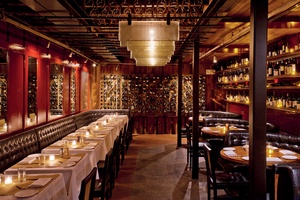
AF: It hasn’t. We have always aimed to have magical moments in our spaces that are artful expressions of our concepts and unique programming. It’s flattering when we see guests taking photos in our spaces, but this was happening well before Instagram, and we hope will still happen after Instagram is long gone.
Are there any other technological (or otherwise) advances that you think are changing or will change interior design?
WH: We may see some impact on interiors in the future by 3-D printing and in some instances
VR: It’s hard to predict the future, however. We will just focus on creating ever-improving hospitality experiences. If technology can assist in that, then that’s great. But if it doesn’t help the guest in a meaningful way then it’s best not to push.

